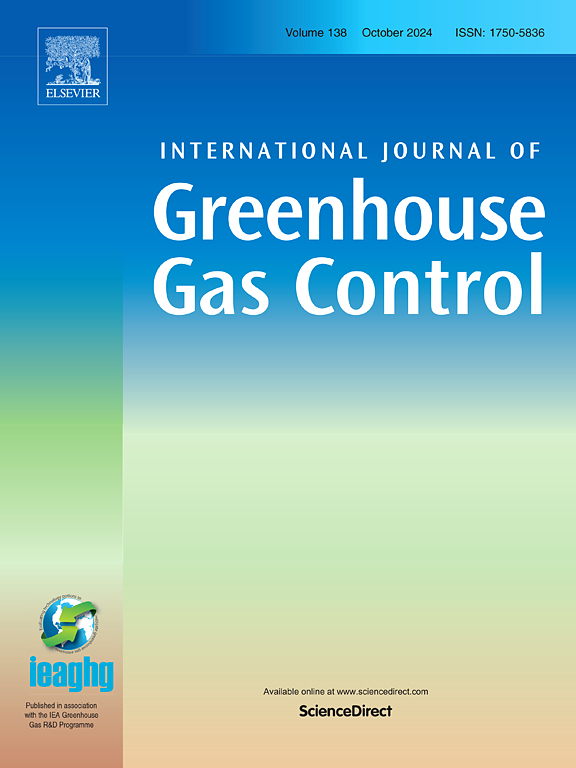美国北达科他州碳储存项目中二氧化碳羽流稳定量化
IF 5.2
3区 工程技术
Q2 ENERGY & FUELS
International Journal of Greenhouse Gas Control
Pub Date : 2025-08-22
DOI:10.1016/j.ijggc.2025.104456
引用次数: 0
摘要
本研究提出了一种量化注入二氧化碳(CO2)何时根据碳捕集与封存(CCS)项目许可和场地关闭要求稳定的方法。流动相CO2 (CO2羽流)在注入过程中和注入后通过物理和化学捕集机制在储层内演化分布。CCS政策普遍认为,注入后CO2羽流的迁移行为应证明不会对环境造成危害,但并未就如何满足羽流稳定的定义提供具体指导,这给运营商带来了一些不确定性。此处的羽流稳定性是指CO2羽流1)在储存库中大小变化最小且可预测,因此不会跨越许可证中确定的关键边界;2)由于向可能存在泄漏路径的区域的横向迁移,不会对人类健康、地下饮用水源(USDWs)和环境构成威胁。已发表的关于羽流度量的文献进行了审查,以确定哪种度量可能最适合于确定CO2羽流稳定性。通过估算CO2羽流地理足迹随时间的变化率来定义羽流稳定性的技术方法得到了发展,并以美国北达科他州的一个案例研究为例进行了说明,作为CCS运营商在项目许可阶段应用的建议解决方案。任何潜在的CCS运营商都可以使用相同的方法来选择孔隙空间租赁和监测区域,并制定注射后的现场护理计划。本文章由计算机程序翻译,如有差异,请以英文原文为准。
Quantifying CO2 plume stabilization at carbon storage projects, North Dakota, USA
This study presents an approach for quantifying when injected carbon dioxide (CO2) stabilizes pursuant to carbon capture and storage (CCS) project permitting and site closure requirements. The distribution of mobile-phase CO2 (CO2 plume) will evolve within the storage reservoir during and after injection through both physical and chemical trapping mechanisms. CCS policies generally agree that the CO2 plume’s migratory behavior in post-injection should demonstrate nonendangerment to the environment but do not provide specific guidance on how to meet the definition of plume stabilization, generating some uncertainty for operators. Plume stability herein means the CO2 plume 1) changes size minimally and predictably in the storage reservoir such that it will not cross key boundaries identified in the permit and 2) does not pose a threat to human health, underground sources of drinking water (USDWs), and the environment because of lateral migration to areas where leakage pathways may exist. Published literature on plume metrics was reviewed to determine which metric(s) may be most appropriate for determining CO2 plume stability. A technical approach that defines plume stabilization by estimating the rate of change in the geographic footprint of the CO2 plume with respect to time was developed and illustrated using a case study from North Dakota, USA, as a proposed solution for CCS operators to apply at the project permitting stage. Any prospective CCS operator may benefit from using the same approach to inform the selection of pore space lease and monitoring areas and develop post-injection site care plans.
求助全文
通过发布文献求助,成功后即可免费获取论文全文。
去求助
来源期刊
CiteScore
9.20
自引率
10.30%
发文量
199
审稿时长
4.8 months
期刊介绍:
The International Journal of Greenhouse Gas Control is a peer reviewed journal focusing on scientific and engineering developments in greenhouse gas control through capture and storage at large stationary emitters in the power sector and in other major resource, manufacturing and production industries. The Journal covers all greenhouse gas emissions within the power and industrial sectors, and comprises both technical and non-technical related literature in one volume. Original research, review and comments papers are included.

 求助内容:
求助内容: 应助结果提醒方式:
应助结果提醒方式:


